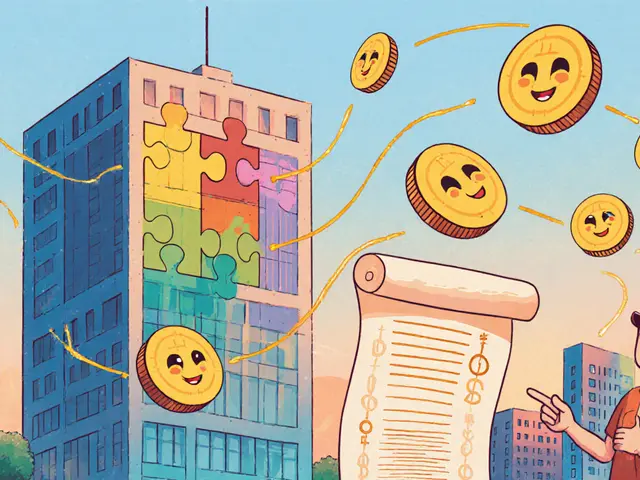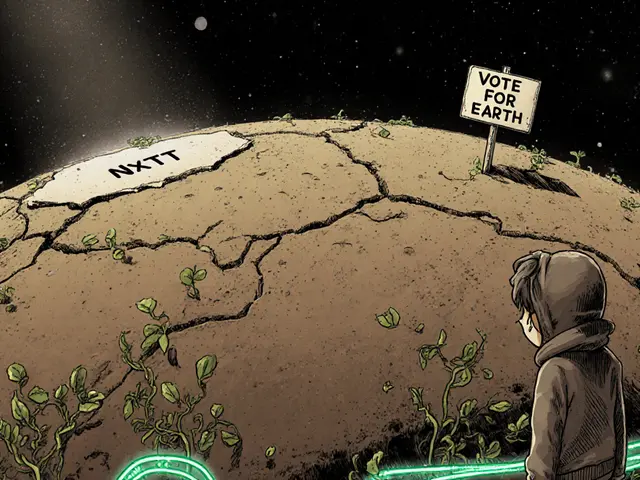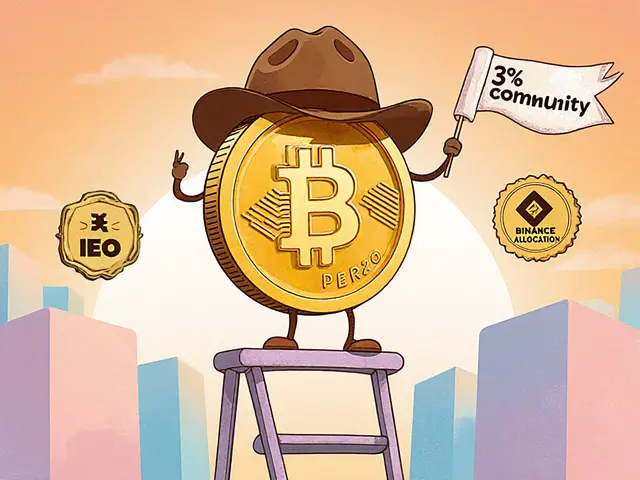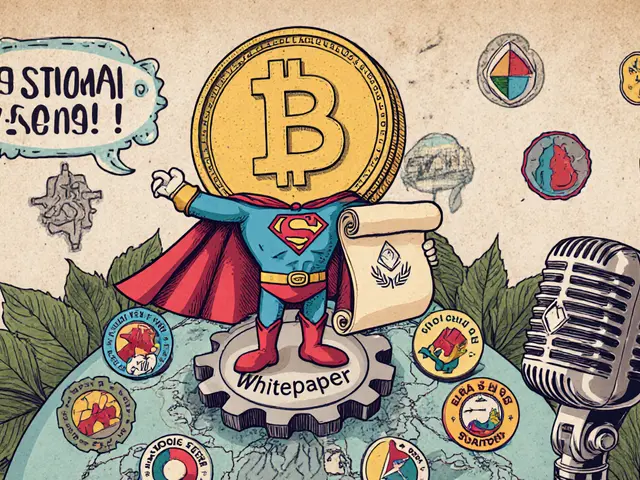
Bitcoin Halving Calculator
How It Works
Bitcoin halving occurs every 210,000 blocks. After each halving, the block reward for miners is cut in half. This calculator shows current rewards, future rewards, and when the next halving will occur based on the Bitcoin network's current block height.
Bitcoin halving isn’t just a technical detail-it’s the heartbeat of Bitcoin’s entire economic model. Every four years, without fail, the reward for mining new Bitcoin drops by exactly half. This isn’t a decision made by a company or a government. It’s coded into the protocol, written by Satoshi Nakamoto in 2008, and enforced by thousands of computers around the world. The last one happened on April 20, 2024. The next is expected in August 2028. And this pattern will keep going until the year 2140, when the last Bitcoin is mined.
How Bitcoin Halving Works
Every time a new block is added to the Bitcoin blockchain, miners are rewarded with newly created Bitcoin. When Bitcoin launched in 2009, that reward was 50 BTC per block. That number doesn’t stay the same. After every 210,000 blocks-roughly every four years-the reward gets cut in half. This is the halving.
Here’s the exact sequence:
- 2009-2012: 50 BTC per block
- 2012-2016: 25 BTC per block (first halving)
- 2016-2020: 12.5 BTC per block (second halving)
- 2020-2024: 6.25 BTC per block (third halving)
- 2024-2028: 3.125 BTC per block (fourth halving)
- 2028-2032: 1.5625 BTC per block (fifth halving)
This isn’t random. It’s math. The Bitcoin protocol checks the block number. When it hits 210,000, 420,000, 630,000, and so on, the code automatically adjusts the reward. No one can change it. Not the developers. Not the miners. Not even a government with all the power in the world.
Why Does Bitcoin Halving Exist?
Bitcoin was built to be scarce. Unlike dollars or euros, which central banks can print whenever they want, Bitcoin has a fixed limit: 21 million coins. That’s it. No more. That’s why it’s often called ‘digital gold.’
Halving is the mechanism that makes that scarcity real. If Bitcoin had kept giving out 50 BTC per block forever, all 21 million coins would’ve been mined in less than a decade. There’d be no long-term incentive for miners to keep securing the network. Halving stretches out the release of new coins over 120+ years, making the supply predictable and slow.
By 2024, about 19.5 million BTC had already been mined-93% of the total. That means only 1.5 million remain to be mined over the next 116 years. The annual issuance rate dropped from 3.5% in 2012 to just 0.8% after the 2024 halving. That’s lower than gold’s annual production growth of around 1.6-2%. Bitcoin is now becoming rarer than physical gold.
What Happens to Miners After a Halving?
Miners are the backbone of Bitcoin. They use powerful computers to solve complex math problems and validate transactions. In return, they get the block reward plus transaction fees.
After a halving, their main income-the block reward-gets cut in half. In April 2024, when the reward dropped from 6.25 BTC to 3.125 BTC, miners instantly lost half their income. That’s a huge shock.
Not all miners can survive this. Those using old, inefficient machines (like the Antminer S9) suddenly go from profitable to losing money. Many shut down. Others upgrade to newer, more energy-efficient hardware like the Bitmain Antminer S21, which uses 17 joules per terahash-far better than older models.
According to HashRateIndex, mining margins dropped from 45% to 22% right after the 2024 halving. Small miners in places like Kazakhstan and Russia were hit hardest. Some left the network entirely. Meanwhile, big players like Marathon Digital and Riot Platforms bought up cheaper equipment from failing competitors, consolidating control.
That’s why transaction fees are becoming more important. Right now, they make up only about 15% of miner revenue. But by 2140, when the block reward hits zero, miners will rely entirely on fees. That’s the long-term challenge: can users pay enough in fees to keep the network secure?

Does Bitcoin Halving Cause Price Increases?
Every time Bitcoin halved, the price eventually surged. But correlation isn’t causation.
After the 2012 halving, Bitcoin went from $12 to $1,150 in a year. In 2016, it jumped from $650 to $2,550. In 2020, it went from $9,000 to $64,000. The pattern looks undeniable.
But here’s the catch: each halving happened during a period of massive global money printing. Central banks dropped interest rates to near zero and flooded markets with cash. Bitcoin wasn’t the only thing that went up-it was part of a broader asset boom.
After the 2024 halving, Bitcoin rose 12.7% in the first 30 days-from $62,849 to $70,832. That’s less than the 17-23% gains seen after previous halvings. Why? Because much of the demand had already been priced in. The approval of 11 Bitcoin spot ETFs in January 2024 brought in $53.5 billion in institutional money. That demand was already supporting the price before the halving even happened.
So, halving doesn’t guarantee a price spike. But it does reduce the supply of new Bitcoin entering the market. If demand stays the same-or grows-then the price has to rise to balance it out. That’s basic economics.
What About the Future? What Happens in 2140?
By 2140, the final Bitcoin will be mined. There will be no more block rewards. Miners will survive only on transaction fees.
That’s the big question: will users be willing to pay enough in fees to keep the network secure? Right now, Bitcoin processes about 400,000 transactions a day. Fees average around $1-$3. That’s enough for now. But if Bitcoin becomes a global payment system, transaction volume could spike tenfold. Fees could rise too.
Experts like EY Switzerland say the remaining inflation is tiny-just 0.71% of total supply left to mine. Bitcoin’s monetary policy is already more rigid than any government’s. By 2028, issuance will drop to 0.4%. By 2032, it’ll be 0.2%. That’s tighter than any currency in history.
There’s no plan to change the halving schedule. Core developers have said repeatedly: the code is final. No upgrades will touch it. That’s the point. Bitcoin’s value comes from its predictability.

How to Prepare for the Next Halving
If you’re holding Bitcoin, you don’t need to do anything. The halving happens automatically. But if you’re thinking about buying, selling, or mining, here’s what matters:
- For investors: Don’t chase price spikes right after the halving. The average time between halving and the next price peak is 528 days. The best window to buy is often 6-12 months before the event, when fear and uncertainty push prices down.
- For miners: Efficiency is everything. If your machine uses more than 20 J/TH, you’re likely unprofitable. Upgrade or exit.
- For developers: The halving doesn’t require code changes. But it does highlight the need for better fee markets. Watch for BIPs related to fee estimation and Lightning Network adoption.
The 2028 halving is already on the calendar. By then, rewards will drop to 1.5625 BTC. The cycle will continue until the last coin is mined. And then? Bitcoin becomes a pure fee-based network. A digital asset with no inflation, no central control, and no way to change the rules.
Final Thoughts
Bitcoin halving isn’t a marketing gimmick. It’s the core reason Bitcoin exists. It’s what makes it different from every other digital currency. It’s not about speculation. It’s about sound money.
Other cryptocurrencies can change their supply rules. Ethereum can print more. Solana can adjust inflation. Bitcoin can’t. That’s its strength. And the halving is the proof.
When you understand the halving, you understand Bitcoin. Not as a price chart. Not as a meme. But as a system designed to last centuries-not just years.
What happens to Bitcoin after the next halving in 2028?
After the next halving in August 2028, the Bitcoin block reward will drop from 3.125 BTC to 1.5625 BTC per block. This continues the pattern of reducing new supply by half every four years. Mining becomes harder for less efficient operators, and transaction fees become relatively more important. Bitcoin’s annual inflation rate will fall to around 0.4%, making it even scarcer than gold. The long-term trend remains unchanged: Bitcoin moves closer to its 21 million cap, with the final coin expected in 2140.
Can Bitcoin halving be stopped or changed?
No. Bitcoin halving is hardcoded into the protocol and can’t be changed without consensus from over 50% of the network’s mining power and users. Even if a government or corporation wanted to alter it, they’d need to control the majority of Bitcoin’s computing power-a near-impossible task given the network’s global distribution. This immutability is intentional. It’s what makes Bitcoin’s scarcity trustworthy.
Does halving affect Bitcoin transaction fees?
Not directly, but indirectly, yes. After a halving, miners earn less from block rewards, so they rely more on transaction fees to stay profitable. If demand for Bitcoin transactions increases, users may need to pay higher fees to get their transactions confirmed quickly. Over time, as block rewards shrink, fees will become the main source of income for miners-especially after 2140, when no new Bitcoin will be created.
Why do people buy Bitcoin before a halving?
Many investors buy Bitcoin before a halving because historical data shows price increases typically follow the event-though not always immediately. The reduced supply of new Bitcoin entering the market creates scarcity, which can drive up demand. Additionally, media attention and speculation often build up in the months leading to the halving, creating a self-fulfilling cycle of buying. However, not all halvings lead to immediate gains, and past performance doesn’t guarantee future results.
How many Bitcoin halvings are left?
There are about 60 halvings left until the Bitcoin supply reaches its 21 million cap. The next one is in 2028, then 2032, 2036, and so on, roughly every four years. The final halving is expected around 2140, after which no new Bitcoin will be created. The remaining 1.5 million BTC to be mined represent less than 0.71% of the total supply, meaning Bitcoin’s inflation rate is already extremely low.





Comments (27)
Eric Redman
lol another bitcoin cultist writing a textbook. halving? more like a marketing stunt to get retards to buy at the top. the price went up because of ETFs, not magic math.
Jason Coe
I’ve been tracking this since 2016 and honestly, the halving isn’t what moves the price-it’s the macro environment. Central banks printing money, inflation fears, people losing faith in fiat. Bitcoin’s scarcity just gives people a place to hide. The halving just makes the narrative louder. But if you look at miner revenue trends, the real story is how fee dependency is creeping up. We’re already seeing consolidation. The little guys are getting crushed. And yeah, by 2140, if the network survives, it’ll be a fee-based system where only the most efficient miners and the most active users survive. That’s not a bug, it’s a feature. The system was designed to outlast governments.
Brett Benton
yo i just bought my first 0.02 btc after reading this and i’m so hyped!! 🚀bitcoin is the future and halvings are like nature’s way of saying ‘stay patient’ 🌱 we’re living in history, bro. 2028 is gonna be wild. get in early or get left behind. #tothemoon
David Roberts
The halving is a pseudo-scarcity mechanism predicated on an artificial scarcity index. The 21M cap is arbitrary, not ontological. The real innovation isn’t the halving-it’s the Byzantine fault tolerance layer. But let’s be honest: the market reaction is behavioral economics on steroids. The cognitive dissonance between ‘sound money’ and ‘speculative asset’ is where the real tension lies. And no one’s talking about the energy arbitrage implications post-halving. The miners aren’t dying-they’re relocating to hydro-powered zones. Kazakhstan? Dead. Iceland? Rising.
Monty Tran
Halving is a joke. Bitcoin is a bubble. The code is immutable but the people are gullible. You think miners care about math? They care about profit. When fees go up, they’ll just raise them. No one’s stopping them. The whole thing is a pyramid scheme dressed up as philosophy.
Elizabeth Melendez
I just want to say thank you for explaining this so clearly! I’m a teacher and I showed this to my econ class last week-kids were actually excited about monetary policy for once 😊 I used to think bitcoin was just crypto nonsense but now I see it’s like a digital version of the gold standard but way better because it’s decentralized. The part about miners upgrading hardware made me think of how tech evolves-like when we switched from dial-up to fiber. It’s not magic, it’s just adaptation. I’m gonna keep holding and maybe even learn to mine a little. Never thought I’d say that!
Phil Higgins
What people miss is that the halving isn’t about price. It’s about time. It stretches the distribution of value across generations. Think of it like a slow-burning candle-each halving dims the flame just enough to make it last centuries. That’s the beauty. It’s not a speculative asset. It’s a time capsule of economic principles. The miners aren’t the villains-they’re the custodians. And when fees become the only incentive, that’s when Bitcoin becomes truly mature. Not because it’s valuable, but because it’s predictable. That’s the real gift.
Genevieve Rachal
Everyone’s acting like this halving is some sacred event. Newsflash: the price already pumped 20% before the halving because of ETF inflows. The halving was priced in. The miners who survived? They’re all institutional. The little guy got wiped out. And now you’re all buying at $70k because you think history repeats? It doesn’t. The next halving will be the first one where demand doesn’t surge because the world is saturated. You’re not buying scarcity-you’re buying FOMO.
Eli PINEDA
wait so if the reward is 1.5625 after 2028… does that mean each block is worth less than 2k dollars now? i thought btc was worth more than that… lol im confused
Debby Ananda
I’m just here for the halving memes 🤓💎 #BitcoinIsDigitalGold #HalvingIsComing #NotYourFinance
Vicki Fletcher
I just wanted to clarify something-many people think the halving directly causes price increases, but it’s really the reduced supply meeting demand. And yes, transaction fees will rise, but that’s not necessarily bad. It means the network is being used. And the fact that the code can’t be changed? That’s the whole point. It’s not about being ‘anti-government’-it’s about being anti-arbitrary. I think this is beautiful, honestly. It’s like a digital constitution.
Nadiya Edwards
They’re lying to you. The halving doesn’t matter. The Fed controls everything. Bitcoin is just a distraction so you don’t notice the real inflation-your wages, your rent, your healthcare. They want you to chase this digital ghost so you forget about the real system stealing from you. Don’t be fooled. This is all a psyop.
Ron Cassel
The halving is a lie. The blockchain is controlled by a few mining pools in China and the U.S. government. The ‘code is law’ nonsense is propaganda. They’re using this to funnel money into Wall Street ETFs. You think Satoshi wanted this? No. He wanted freedom. Now it’s just another Wall Street casino. They’re printing digital dollars and calling it Bitcoin. Wake up.
Malinda Black
I just started learning about Bitcoin last month and this post helped me so much. I was scared to even look at crypto because I thought it was all scams. But reading about how the supply is capped and the halving is automatic… it actually makes sense. I’m not investing yet, but I’m definitely holding some now. Thank you for writing this with so much care.
ISAH Isah
In Nigeria we have no trust in our currency so we use bitcoin to send money to family abroad. The halving does not matter to us. We care about reliability and low fees. The real story is not in the math but in the people who use it to survive. Bitcoin is not for speculation. It is for the unbanked. The halving is just a technical footnote to us
Chris Strife
This is why America is falling behind. We’re wasting time on this digital fantasy while China builds its own CBDC. Bitcoin is a hobby for losers. Real money is state-backed. Get over it.
Mehak Sharma
You know what’s wild? The halving is like a heartbeat-steady, rhythmic, inevitable. And each time it slows, the world leans in a little closer. In India, we’ve seen retail investors shift from gold to BTC because it’s portable, divisible, and unstoppable. No bank can freeze it. No politician can devalue it. The halving isn’t a price trigger-it’s a cultural signal. We’re witnessing the birth of a new kind of trust. Not in institutions. But in code.
bob marley
You think you’re smart because you know the block reward drops? Congrats. You’re 12 years behind. The real halving happened when ETFs got approved. Now it’s just a corporate liquidity event dressed up as libertarian fantasy. Get a real job.
Jeremy Jaramillo
I read this whole thing and I just wanted to say-thank you. It’s rare to see someone explain something this complex without sounding like a salesman. The part about miners upgrading hardware? That’s the quiet revolution. It’s not about price. It’s about resilience. I’ve been holding since 2017 and I never sold. Not because I expected a pump. But because I believed in the system. And this post? It reminded me why.
Sammy Krigs
so wait the reward is cut in half every 4 years… but what if someone just changes the code? like can’t they just make it 12.5 again? i mean its just a computer right?
naveen kumar
The halving is a myth. The 21 million cap is not enforced. The blockchain can be forked. The miners are controlled by a few entities. This is not decentralization. This is centralized control with a propaganda layer. The price rises because of hype, not scarcity. The entire narrative is designed to sell you a dream. You are not buying money. You are buying a story.
Wesley Grimm
The halving reduced miner revenue by 50%. But hash rate increased by 15%. That means the network is becoming more efficient, not more valuable. The price rise is disconnected from the economic reality. The miners are surviving because of energy subsidies and cheap hardware. This isn’t sound money. It’s subsidized speculation.
Masechaba Setona
I live in South Africa. Our currency is trash. Bitcoin saved my family. But the halving? I don’t care. I care that I can send R5000 to my sister in Zimbabwe in 10 minutes for R10. That’s real. The math is pretty, but the use case? That’s what matters. The halving is just background noise to people who need freedom.
Edgerton Trowbridge
The elegance of Bitcoin lies in its predictability. Unlike fiat systems, which are subject to political whims, Bitcoin’s monetary policy is mathematically deterministic. The halving is not a mechanism to inflate asset prices-it is a mechanism to ensure long-term network security through controlled issuance. The transition to fee-based mining is not a threat; it is the natural evolution of a mature protocol. The fact that this system has operated without alteration for over 15 years, despite immense pressure, is a testament to its resilience. We are not witnessing a speculative bubble. We are witnessing the emergence of a new monetary paradigm.
Eric Redman
You said it better than I could. The ETFs were the real catalyst. Halving? Just a calendar event. The miners are just contractors now. And when fees rise, guess who pays? The users. Not the whales. Not the ETFs. The little guy buying coffee with BTC.
Phil Higgins
That’s the point. The users pay because they value the security. And that’s what makes it sustainable. It’s not a tax-it’s a transaction cost for trust. And trust is priceless.
Malinda Black
This whole thread just made me cry a little. I didn’t think anyone else saw it this way. Thank you both. I’m not rich, but I feel like I finally understand something important.